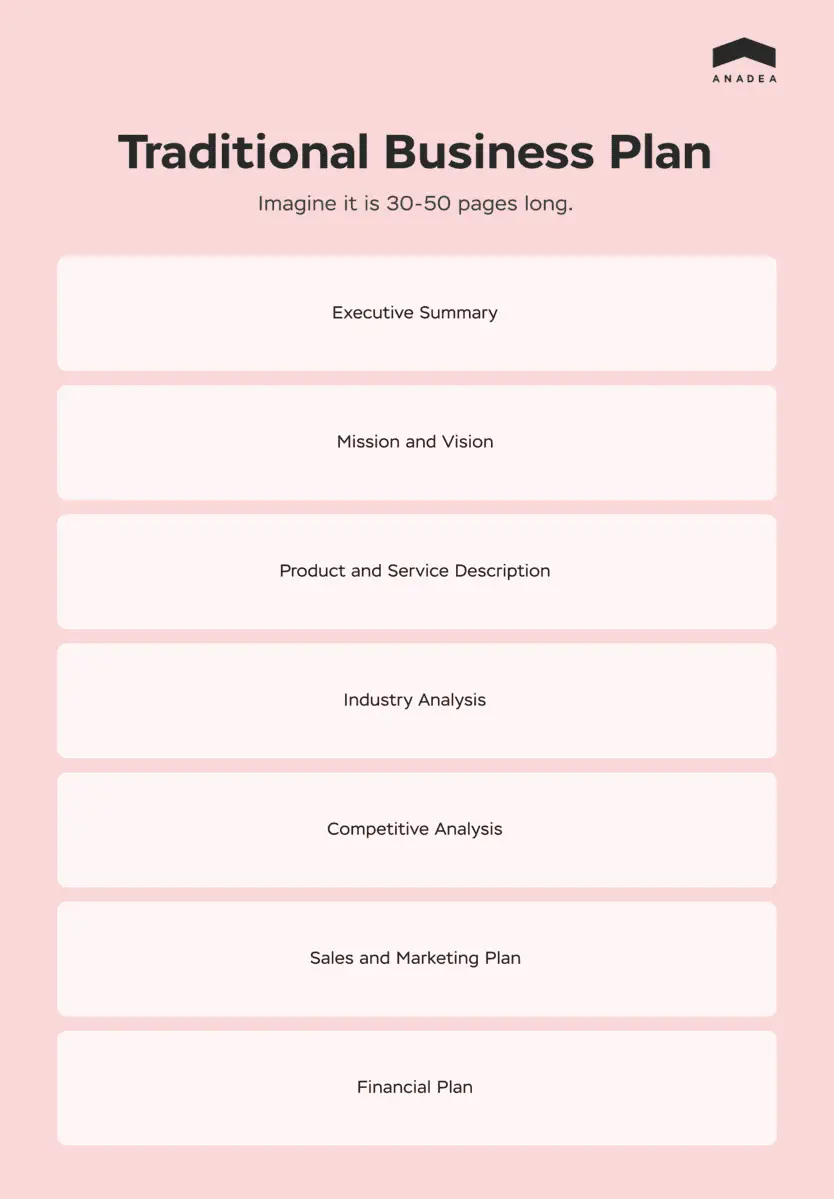How to Write a Business Plan for a SaaS Company

If you are on this page, perhaps you are already well aware of the benefits of composing a business plan when starting a venture. It allows you to stand firmly on the ground at every stage of business development and present your idea to investors correctly.
What could possibly bring you here is the question of how a business plan for SaaS is any different from a regular business plan and what to pay attention to when working out a SaaS business strategy. Let’s figure it out.
What Is a SaaS Business Model?
SaaS or Software-as-a-Service is a type of software maintained in the cloud, and to access and use it, B2B and B2C customers have to pay for a subscription. Subscription is the main source of revenue for the Software-as-a-Service business model which assures a high ROI for startups of this kind.

The most common SaaS examples are Salesforce, Slack, AWS, HubSpot, Mailchimp, Dropbox, and a lot more – their names are all around. SaaS end-user spending is set to reach $208.1 billion by 2023 – the growth is impressive considering the past year’s number, $152.18 billion.
SaaS VS Legacy Systems
More and more commonly, companies are looking to SaaS-ify their legacy software. It would not be so if SaaS sustained no value and benefits legacy systems have not.
Legacy systems are pieces of software and hardware that still manage to work (usually, supportability problems are present) but are not as scalable compared to cloud-based SaaS whose scalability has no upper limit.
Some may find the idea of storing their business software in the cloud quite disturbing. Risks frequently associated with cloud-based software are possible attacks and client data leaks. These aspects without a doubt have to be approached seriously with all the safety precautions observed.
However, it would be unfair to ignore the fact that on-premise systems have their own vulnerabilities and need proper protection measures too. Consequently, security concerns are not a downside of SaaS but just something to bear in mind.
The recommended measures for security protection are SaaS Security Posture Management (SSPM) tools that identify integrity issues, excessive user permissions, and other cloud-related risks. What we mean is that appropriate steps toward security protection can lift a lot of concerns of a business thinking about SaaS-ification.
Making First Steps Toward Your SaaS Business Plan
The answer to what your SaaS business will be like has to be clear before starting a SaaS company business plan, not the other way around. With a clear SaaS concept in mind, start thinking of how the business plan will manage to break down the following:
- What problem of users is it designed to solve?
- Who is your target audience and how will you approach them?
- How will your product help businesses make more profit?
- Why customers should choose your proposition over similar ones?
SaaS Startup Business Plan: Traditional VS Lean
Time to pass from reasoning to action and translate everything you have been thinking over into a well-rounded plan. There can be two approaches to it. Below, we will review each.
Composing a Traditional Business Plan for SaaS
How many pages should a business plan be? A traditional, practically academic approach to composing a business plan suggests it should have 30–50 pages of plain text, graphs, and argumentation. The proposed structure for a traditional SaaS business plan is:

1. Executive Summary
Essentially, this is the elevator pitch about your SaaS key perks and ability to fulfill its purpose. At this stage, your task is to capture the reader’s attention, and for that, it is necessary to know who your reader is.
Include supporting data from research on your topic and be concise. Ironically enough, the introduction in its core, the ideal executive summary can be read as the conclusion with your business’s audience, relevance, and funding clearly outlined. This is why entrepreneurs are frequently suggested to compose the executive summary after the plan is finalized.
2. Mission and Vision
No matter who you will be looking to outreach, bear the right mission statement in mind. To sound convincing and clear to your customer, speak less about your product and more about the customer and the problem SaaS is going to solve. Probably your end-user will be happy to know how great your product is, however, they will be 100 times happier to find out how they can benefit from it.
In a nutshell, it should be not the ‘here’s my great SaaS and what it does’ narrative but ‘you will get this, this, and that when using the product.’
3. Product and Service Description
In this section, you are expected to break down all of the product functions as detailed as possible. When reading this section, the reader has to get a clue about what your product is and why they should bother.
4. Industry Analysis
Here, present an overview of the market you are about to rush into. The context matters: explain to your reader why it is high time to embrace the niche you are embracing, provide them with numbers and recent statistical findings, and show what a promising market it is.
If no such supporting data is available, prove to the readers that the industry you are targeting is overlooked for no reason. The industry is not getting the attention it deserves due to some terrible misunderstanding – this is the impression the reader should have after they look through this section.
5. Competitive Analysis
After you spoke about the market prospects, you will need to give your reader some examples of successful SaaS products already out there. Be very careful here: your task is to show how well your SaaS business will supplement the product range, how beautifully it will fit in, and fill the gaps in the market. This will not work if what you are offering is a copy of a successful solution. Launching a startup similar to an existing one is fine, but launching one with no competitive advantage is pointless in an oversaturated market.
So here it is necessary to understand how different your SaaS will be from competitors and, which is just as important, in what are your rivals competing with each other.
6. Sales and Marketing Plan
Tesla has no marketing department – their product is that good that it sells itself. This is what you can often hear here and there. Does it mean Tesla cars are really that great? Yes, it does! Does it mean your SaaS does not need marketing if you find it as awesome? No way.
In the case of Tesla, the advantage that granted the brand its recognition is the unarguable uniqueness of the product, which really few businesses can boast of. Besides, the ‘0 dollar marketing budget’ statement can be a kind of strategy itself. You can not do without a sales and marketing plan when drawing up a B2B SaaS business plan if only because essentially, the business plan is the sales document by nature. With your plan, you are selling your idea to investors and customers.
So by the plan as a whole, you will need to present your product in all of the possible aspects, and by the sales and marketing part of it, focus on your customer persona, the ways to gain their attention, and the resources you have at your disposal for this purpose.
7. Financial Plan
In the financial section, specify and justify the amount of money needed for the development of your SaaS, allocation of budget for marketing and human resources, and the funding needed.
Put down simply, the main components to include in the financial plan are:
- Cash flow projections (money expected to come in and out of your business in a period of time);
- Income statement (operating expenses, total net profit or loss, a.k.a. gross margin);
- Balance sheet (assets, or available resources, liabilities, or what you owe, and the amount of money generated).
Since it is SaaS we are talking about, there is no better place to remind ourselves what is its main source of income – paid subscriptions. SaaS pricing should be clearly defined based on the info you get at the stage of competitors’ analysis.
How to price a SaaS product and be reasonable? The 10x rule often used in business can be applied to deciding how much to charge for a SaaS.
For the 10x principle to work, make sure the profit given by your SaaS is at least 10 times greater than you charge for it. Put crudely, if your SaaS helps a company save $10.000 per month, you have every reason to charge a $1.000 monthly payment. Few businesses can resist the x10 ROI.

And still, given all this, it is difficult to be 100% precise when estimating financial projections. In fact, when it comes to planning a SaaS business launch, in a niche so rapidly growing and changing, the lean plan might work just as well as the classical approach to writing a business plan. This does not change the significance of traditional business planning – on the contrary, both approaches are provided for you to choose from without us pushing you to take sides.
Composing a Lean Plan for SaaS
Contrary to the elaborated business plan described above, the lean plan is all about being concise and compact about wording. Forget the 30–50 page volume. The ideal lean plan can fit on one page.
When writing a lean business plan, your goals (apart from trying to use little space) are:
- Be clear about the vision and goals;
- Prove SaaS profitability to the reader.
See the lean business plan for the SaaS template. Step by step, let’s figure out what should be specified in each section using the example of invoicing SaaS.

Identity. This is what defines you as a business and sets your value for customers. Mind the ‘less we, more you’ principle. ‘Seamless integrations, automated proration & recovery of lost revenue’ sounds more selling than just ‘We are a great invoicing tool.’
Problem worth solving. The pain that forced your customer to look into possible solutions is the problem than needs to be identified as well. For example, your customer is struggling with data syncing which causes incomplete invoicing information collection.
Our solution. This section has to convince the reader that the proposed SaaS will never let bad syncing or whatever they struggle with happen.
Target market. Describe your ideal customer and how many of them are out there if you know it.
The competition. If not your SaaS, what do people with the same problem use to solve it? How are you better than the alternatives?
Sales channels. How will you sell SaaS to your customers? Describe particular sales channels: website, outreaching the potential customers directly, etc. Who will be involved in the sales process?
Marketing activities. If marketing activities will take place, specify the channels and approximate cost of marketing your SaaS.
Revenue. Here, list the means that turn your SaaS into a profit-generating business. For SaaS, this is perhaps the easiest section to fill – the subscription.
Expenses. List the sides of setting up a SaaS business that require investment. When it comes to building custom software which SaaS is, web development services are something that should be considered first.
Milestones. Your achievements within the next few months. What goals do you expect your Software-as-a-Service to hit and what will you do for that milestones?
Team and key roles. List those who will help you launch and develop your SaaS business if any.
Partners and resources. If there is another business that will help you launch, indicate it in this section. Your competitive advantages such as support from, say, other financial businesses, if we are still speaking about invoicing SaaS, are worth listing here too.
TL;DR
too long; didn’t read
|
|
Every successful SaaS has grown from an idea and then a business plan. No matter how many business plans templates you see online, they do not have to be followed strictly – all ideas can be customized to give a good showing for your project.
Good luck with your undertaking! We’ll be happy to see you again when your plan is ready and build a great SaaS together.
Don't want to miss anything?
Subscribe and get stories like these right into your inbox.
Keep reading

How to Build a Website for Psychological Therapy Practice
If you are committed to starting a private practice as a psychologist or you have been a private therapist for a while now, you can consider developing a website to promote your services.
![How to Assess a Software Company Portfolio? [Checklist]](/blog/software-development-company-portfolio/red_berries_hufe6fdeca0e7bc252272c46bb3c9f5f28_72058_0x0_q75_h2_.webp)
Software Development Company Portfolio: How to Assess Case Studies and What to Look At?
A software company portfolio may say a lot more than any advertisement or laudatory review. You only need to learn how to analyze it.

How to Create an App Like Uber: Features, Technologies, and Cost
Developing apps like Uber and other taxi apps requires a deep understanding of how it works. In our article, you will learn how to make an app like Uber and what features it should have.
Contact us
Let's explore how our expertise can help you achieve your goals! Drop us a line, and we'll get back to you shortly.